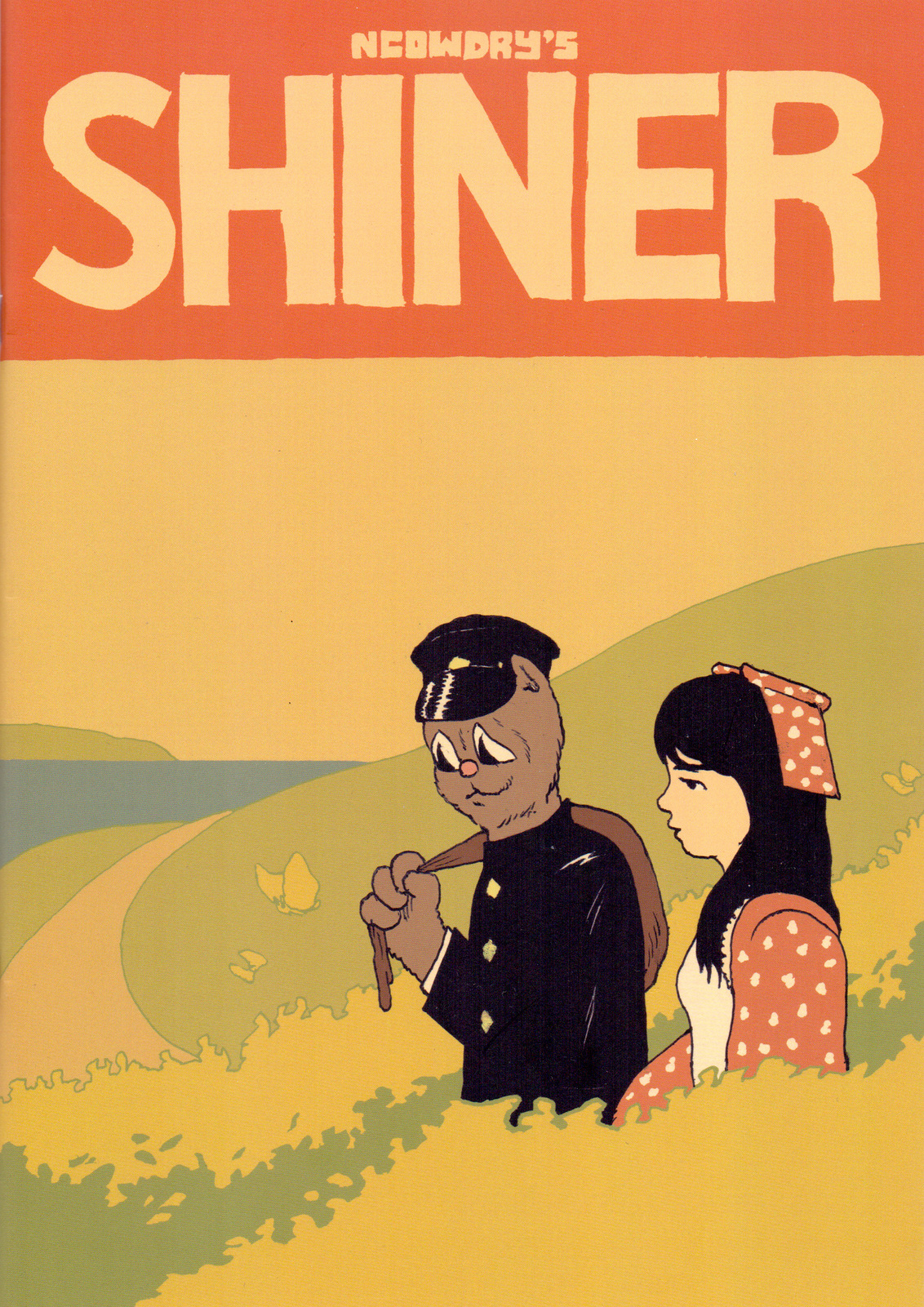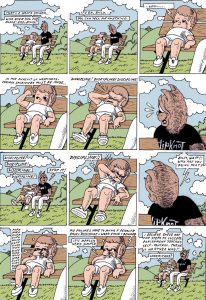Some folks on Twitter and Instagram post #mailday pictures, and I depending on the person, I follow those with great interest. I’m always excited to find something new I hadn’t seen before, and Nathan Cowdry’s Shiner showed up in a pile a few months ago, on a cartoonist’s feed. I thought the cover was interesting so I tracked down a copy from the UK-based Family Store, knowing not much more than its clearly Japanese comics-inspired cover image. Having now read the book, it’s much stranger than I was initially prepared for; the book is a weird conglomeration of sexual obsession, violence, zeitgeist-prodding, and an aesthetic that looks pulled straight out of a 60’s shojo magazine.
Shiner is a winding comic, with plenty of flashbacks and brain-damage induced daydreams; its basis is a conversation on a park bench between a kewpie doll looking character named Billy, and an anthropomorphic cat named Kat (wild, I know). The title of the book refers to the black eye Billy has given himself through mortification. Starting at this strange place, the book twists, turns, and pisses on your boots. It’s clear that Cowdry is taking the piss at his reader’s expense. How you feel about that will likely steer your reaction to the work.
One of the key features of Shiner, and from what I can tell, all of Cowdry’s work, is the appropriation of early shojo manga aesthetic. Cowdry’s female faces look like work by Eiko Hanamura and other 60’s and 70’s shojo. It’s hard to know what to make of this aesthetic, which at times verges on a type of kewpie doll cute. There are some other formal aspects to consider; the panels, especially at the beginning and the end, blend together through the use of cloudforms. Cowdry lets these flow into the gutters between the panels, which pulls the 4×3 grid he uses together into one larger image.
There’s an absurdity to this comic that I’ve been skirting around. Billy the main character, at one point confessing to being a troll and a genuinely heinous person online, says “Am I alt-right? I don’t want to be alt-right!” and says the word “kek” repeatedly. He breaks up with his partner Jennifer after he has gender reassignment surgery and takes the name Jeremy. Kat breaks up with a long-time girlfriend because she’s a 9/11 truther. “Building 7 was a controlled demolition,” she says, immediately following a pictured sex act. Cowdry even sprinkles in some atheist evangelism for good measure. It is the diametric opposition of a dated appropriated aesthetic and the bizarrely recent political garbage of 2017 that makes Shiner compelling. Whether Shiner is tasteful – well, that depends on your definition of taste.
Cowdry also makes a clear link between sexual desire and violence. Kat’s relationship is the most prominent view of this linkage, but it’s visible elsewhere in the book.
Part of me thinks that Cowdry is aiming at satire in Shiner. Billy is a disgusting character. But I think Kat, his natural foil in the book, seems to take everything Billy does at face value. There’s some lecturing about how God is fake, but there’s no value judgement, and so the satire, if it truly exists, falls apart. But what is clear is that Shiner is a comic that is rooted in violence. Violence of the protagonist against self and others; violence of the artist against appropriated/plagiarized Japanese artists; misogyny and, depending on how you read the book, transmisogyny. Whether Cowdy is doing this in earnest or in jest is largely beside the point.

Sequential State is brought to you through reader donations. Your help keeps the site running ad-free. Please consider pledging your support. Thanks!




